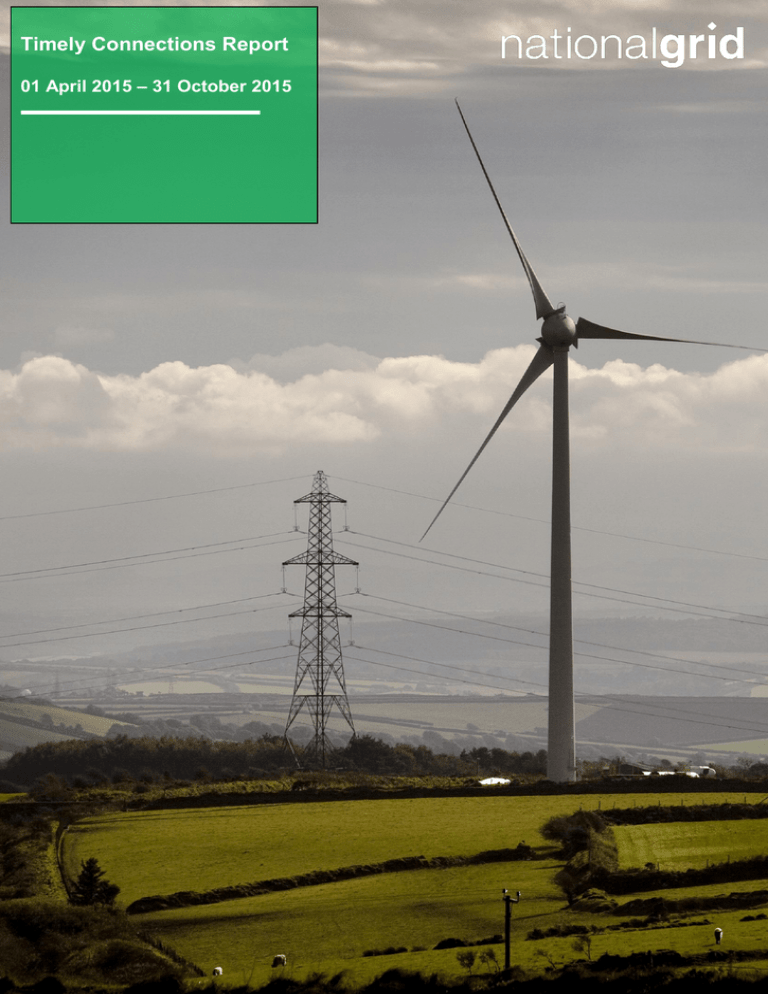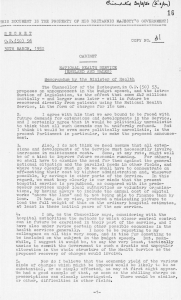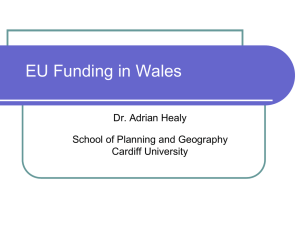imely Connections Report Timely Connections Report
advertisement

Timely Connections Report 01 April 2015 – 31 October 2015 1.0 Introduction 1.1 About the Timely Connections Report (“the Report”) The Report provides analysis of the 120 new licensed connection offers and modification offers which have been made by National Grid, Scottish Power Transmission and Scottish Hydro-Electric Transmission as Transmission Owners (“the TO’s”) for the period 1 April 2015 to 31 September 2015. The Report provides information on the factors that influence the connection dates being offered to Customers and the timescales for connection by region. It also provides information on the type of generation seeking to connect. In this Report we have included a section which looks at Offers made under Connect & Manage arrangements and the average advancement timescales afforded to Customers as a result of applying for a Connect & Manage Offer. Previous copies of the Report can be found via the following link: http://www2.nationalgrid.com/UK/Services/Electricity-connections/Industry-products/timelyconnections-report/ 1.2 Key findings in this period 48% of the total Offers issued met the Customer’s requested connection date, which is the same figure as the previous report, the primary reason for this not being higher is due to the continuing interest in connections within Scotland which can require extensive reinforcements to the network and are often subject to protracted and difficult planning applications. While the amount of Offers have decreased in this reporting period, as compared to the previous 6 months, it is still a 40% increase from the same period last year. However, the average connection date delay for those offers which did not meet the customers’ requested completion date has been maintained at the previously reduced level (Scotland) or reduced (England & Wales) since the previous report. The majority of new projects are in Scotland and while the size of the generation is generally smaller as compared to England and Wales, the projects are being given connection dates beyond their requested date due to the fact that there are many other projects awaiting connection. Due to the scale of the transmission reinforcements required there are challenges in gaining planning consent and obtaining system access to complete transmission upgrade works. Also, many of the generation connections are still in a ‘scoping’ phase without planning consent and therefore, there is significant uncertainty as to which generation is going to connect and when. As in previous report periods, the connection dates offered are as a result of high connections activity within certain regions rather than as a result of the type of generation applying to connect. 1.3 Feedback We are continuing to review the content and format of this Report and therefore, your views are important to us. If you would like to provide feedback or have any questions regarding this Report then please do not hesitate to contact us via the following email address: transmissionconnections@nationalgrid.com 2 November 2015 Timely Connections Report v1 2.0 Illustrative Connection Timescales SHE Transmission 2015 – 2023 Numerous embedded. Often Grid Supply Point reinforcements SP Transmission 2015 – 2023 Numerous embedded. Often Grid Supply Point reinforcements North England 2016 – 2020 Mix of generation connection applications East England Generation projects from 2018 West England & Wales Demand connections from 2016 – 2019 Generation connections from 2018 – 2021 South England 2016 – 2020 For demand connections The shaded map shown above can be found in the current version of the Electricity Ten Year Statement (ETYS), which can be accessed via the link below: Please refer to Section 3.5 Boundaries Introduction, Figure 3.2 Region Map. http://www2.nationalgrid.com/UK/Industry-information/Future-of-Energy/Electricity-Ten-YearStatement/ Throughout this Report the data has been grouped by reference to the geographical regions which are shown on the map. 3 November 2015 Timely Connections Report v1 2.1 Customer requested date vs. date offered and average difference The table below shows the number of Offers made by ETYS region, the number where the connection date offered was later than that which the Customer requested, and the average connection date difference (in months): ETYS Region SP Transmission SHE Transmisson West England & Wales South England East England North England Grand Total No. of Offers made in period No. with later connection date than requested Average connection date difference (months) 50 38 29 27 21 17 11 4 9 8 7 6 120 0 1 1 62 0 3 2 n/a Note: Treatment of “staged” Offers i.e. a single contract but with > 1 stage of construction and / or capacity (TEC). An average has been derived for the purposes of the connection date difference. This has been achieved by summing the difference (in months) per stage and then dividing this total by the number of stages e.g. Stage 1 advancement of 12 months and Stage 2 advancement of 6 months = total 18 months (12 + 6) divided by 2 (stages) = 9 months average difference for that single contract. This value is then added to the other values for Offers made within that ETYS region to determine the average connection date difference for that region. 2.2 Factors that have influenced connection dates offered The bar chart below shows a summary of those factors that have influenced the connection dates which have been offered during this period: Expressed as a percentage; the factors show that for the 120 Offers which were issued during 1 April 2015 to 31 September 2015. 49% were based upon anticipated standard construction timescales for the type and size of project 48% met the Customers requested completion date 3% related to instances where the requested date did not take into account the timescale for completing transmission works All instances where the anticipated standard construction timescales are lengthened due to known or expected consenting issues relate to those Offers which have been made for Scottish connections where there are challenges due to the scale of the reinforcement work required. Many of these reinforcements also require regulatory approval before the Transmission Owners can proceed with the works. With the uncertainty on volume and timing of new generation it can make the needs case for planning and investment in transmission reinforcements a challenge. 4 November 2015 Timely Connections Report v1 3.0 Size and Type of Generation Offers 3.1 Offers made by generation type ETYS Region No. of Offers made in period Renewable Non Renewable Demand Interconnector SP Transmission 50 50 0 0 0 SHE Transmisson 38 38 0 0 0 West England & Wales South England East England North England Grand Total 11 8 7 6 120 1 1 0 3 93 5 1 3 3 12 5 5 3 0 13 0 1 1 0 2 Note: The classification “Renewable” includes low carbon technology. The data shows that there continues to be significant interest in applications for renewable projects in Scotland. Whereas in England and Wales there are a lower number of applications but they are for a broader spectrum of technology. 3.2 Offers made by generation size ETYS Region SHE Transmission SP Transmission Combined England & Wales No. of Small Offers made 20 31 No. of Large Offers made 18 19 No. of Demand Offers made 0 0 1 16 13 *Does not include interconnectors For the period 1 April 2015 to 31 September 2015 the data reinforces the generation mix within regions i.e. numerous small onshore wind farms within Scotland and larger plant of various renewable and non renewable technology applying to connect within England & Wales. The type or size of generation does not significantly influence the connection timescale. It is predominately the location on the transmission system which determines the connection date. Note: A “Small” generator is a site that is: <10MW in SHE Transmission, <30MW in SP Transmission, <50MW across the England & Wales regions. A “Large” generator is a site that is: >10MW in SHE Transmission, >30MW in SP Transmission, >100MW across the England & Wales regions. The classification of “Medium” generator exists in the England & Wales regions and is a site that is >50MW and <100MW. No Medium Offers were made in the period which is covered by this Report. 5 November 2015 Timely Connections Report v1 4.0 Connect & Manage Offers 4.1 Number of C&M Offers made per ETYS Region and associated advancement timescale The table below shows the number of C&M Offers made during the period by ETYS region and the associated average advancement that a Customer may benefit from should they choose to enter into a C&M Agreement. ETYS Region No. of C&M Offers made in period Average Advancement (in years) Renewable Non Renewable 50 5 50 0 38 7 38 0 5 7 1 4 2 3 6 104 8 7 8 n/a 1 0 3 93 1 3 3 11 SP Transmission SHE Transmisson West England & Wales South England East England North England Grand Total C&M agreements are given to those Customers who request a connection date ahead of when the wider transmission reinforcements can be completed. C&M is not applicable to interconnectors, nuclear or demand connections. C&M agreements contain a derogation against the NETS SQSS which allows for a connection to be made ahead of wider transmission reinforcements. Therefore, in order to calculate the average advancement timescales reference has been made to Section 4.6 Investment Recommendations of the ETYS. This sets out for each ETYS region the wider reinforcement works which would be required to facilitate continued growth in new connections and the associated completion date of the transmission works to meet the Gone Green Scenario. The year that the last reinforcement work is required to meet the Gone Green target for that region has been used to then determine the difference between that date and the connection date offered to each Customer. An average has then been arrived at for each ETYS region. This approach has been taken because of the way in which transmission reinforcements are identified is now based on a least regrets cost benefit analysis. Each year the required reinforcements are assessed against the scenarios detailed in the National Grid Future Energy Scenarios document. Against these scenarios a cost benefit analysis is undertaken to assess the forecast constraint cost compared with the cost of the reinforcement. As a result the appropriate reinforcements can be identified which are of the right size and that can be completed at the right time. As the future generation profile changes then so will the timing and size of the proposed transmission network reinforcements. 6 November 2015 Timely Connections Report v1





